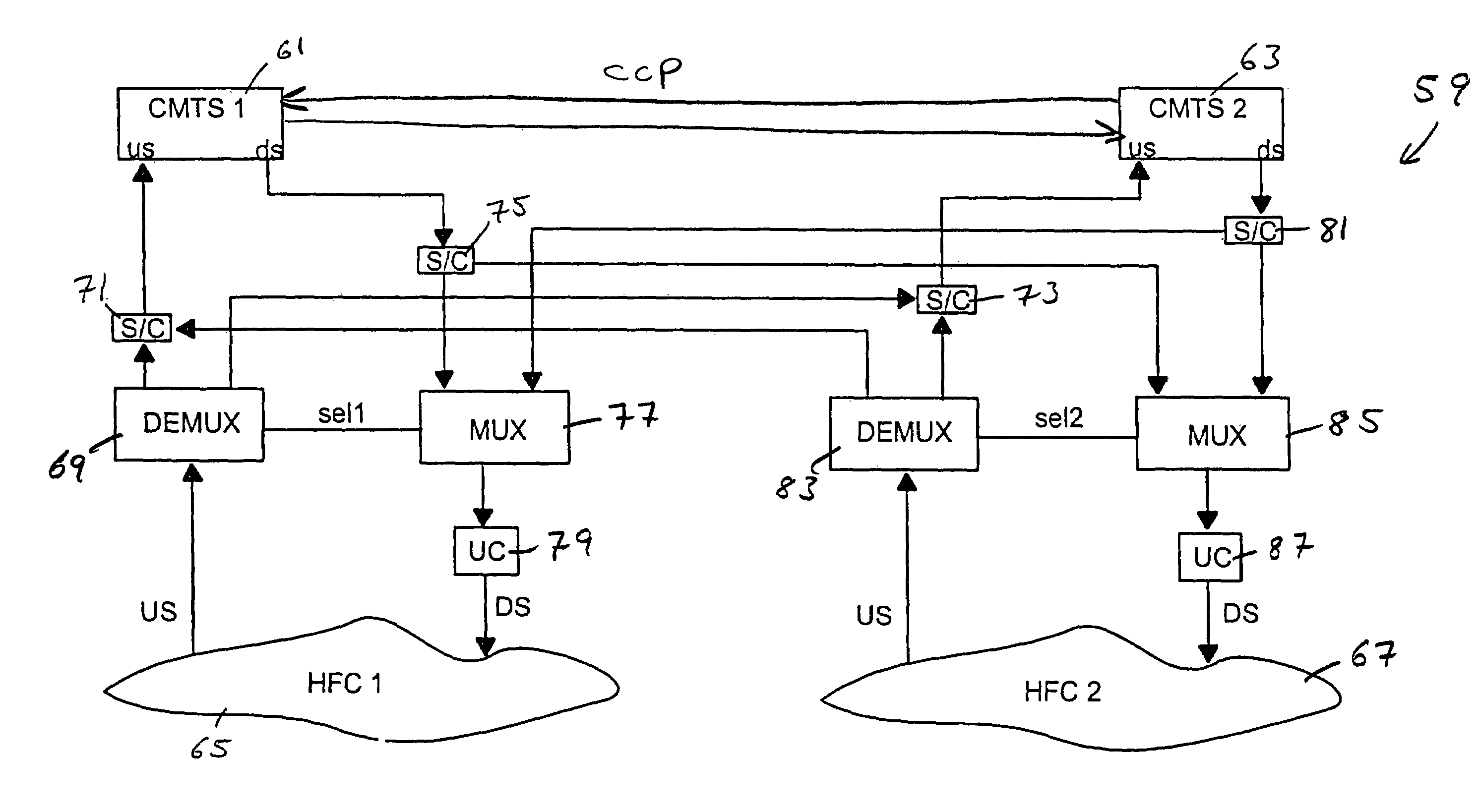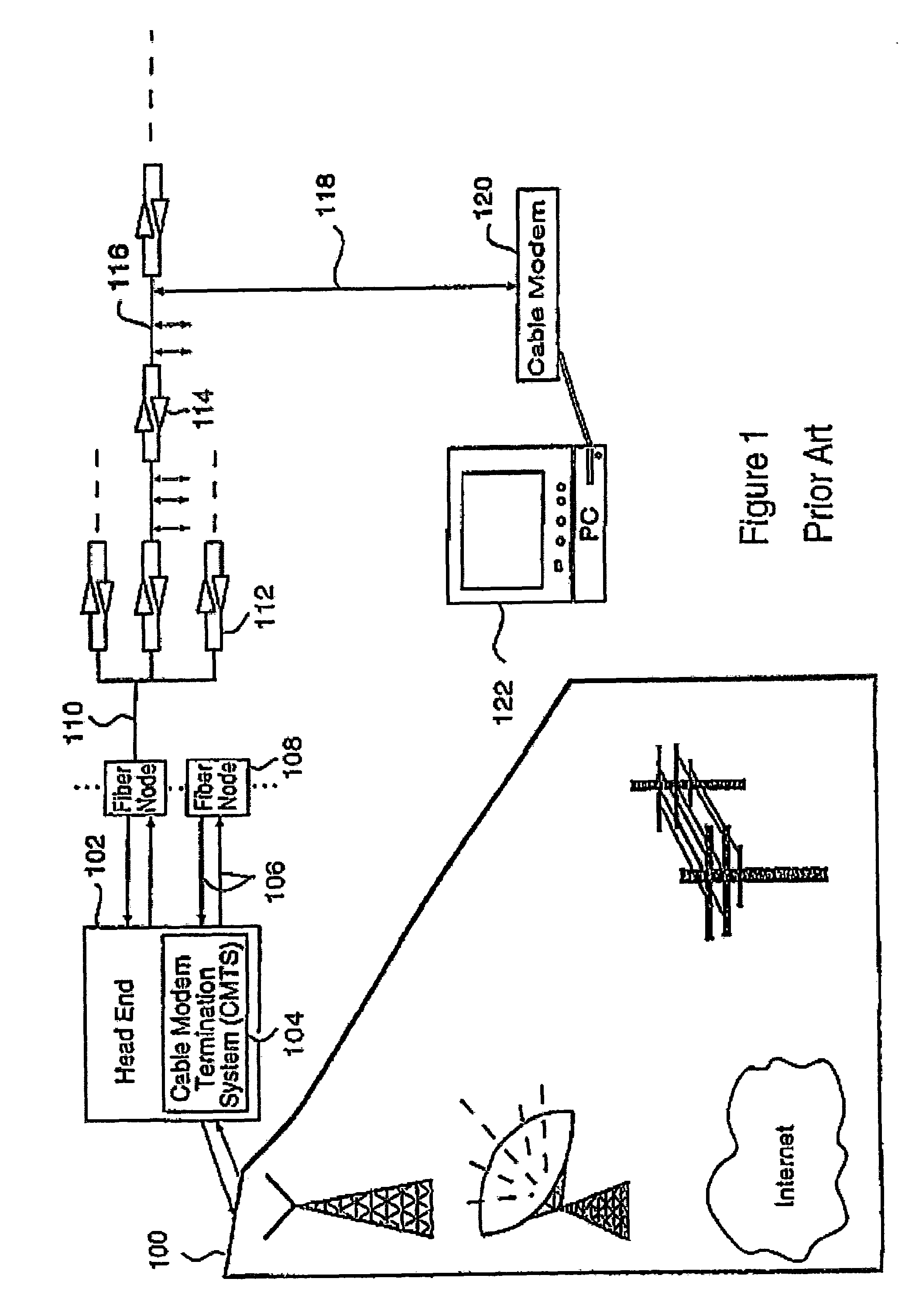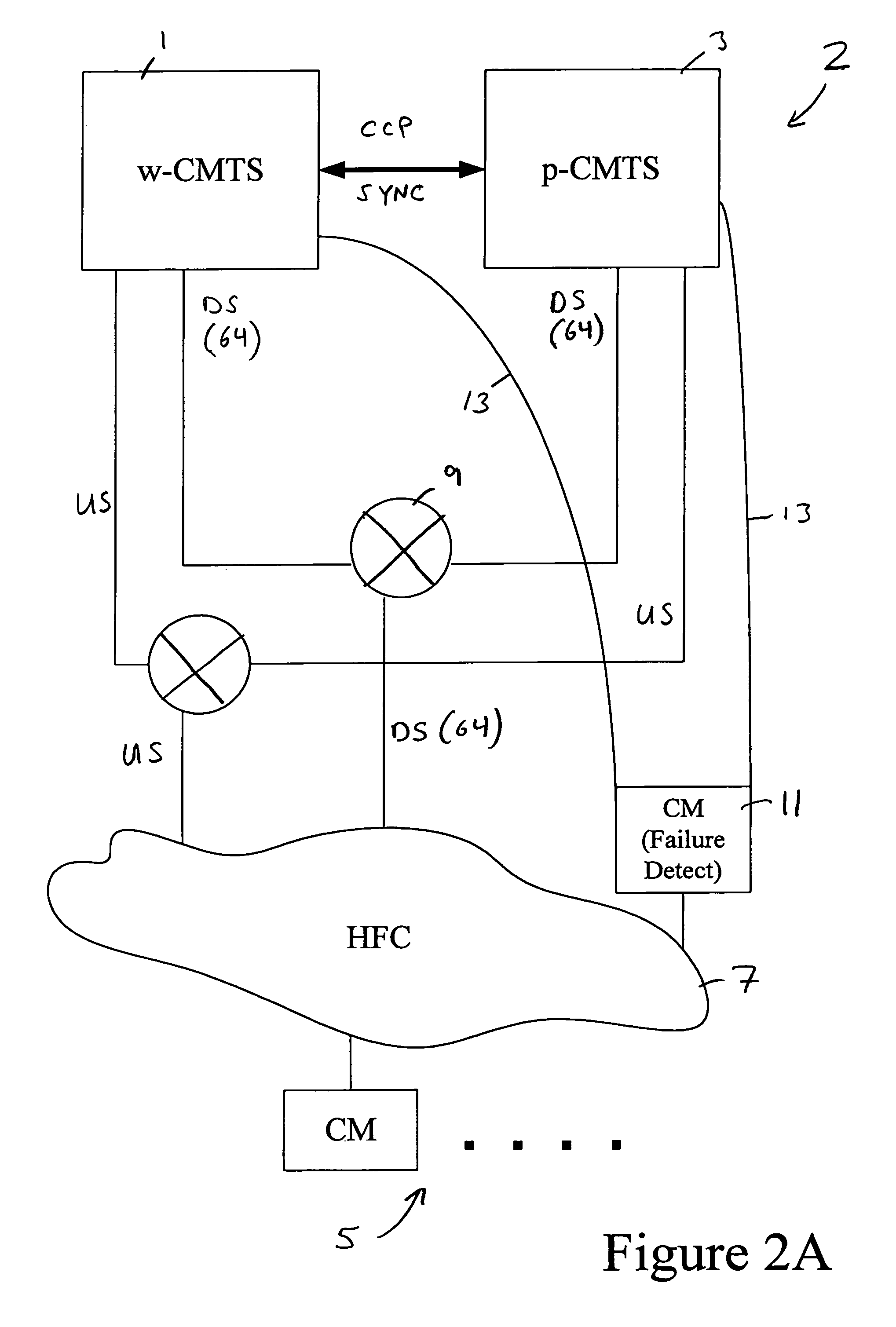Cable network redundancy architecture
a network redundancy and cable technology, applied in the field of digital cable network technology, can solve the problems of extremely undesirable type of disruption or delay in service, difficult task of providing reliable high-quality voice/video communication over such networks, etc., and achieve the effect of transparent cable modems
- Summary
- Abstract
- Description
- Claims
- Application Information
AI Technical Summary
Benefits of technology
Problems solved by technology
Method used
Image
Examples
Embodiment Construction
[0027]I. Overview
[0028]The present invention may be implemented in many ways. Generally, the invention employs two or more CMTSs or CMTS interfaces: one active CMTS which services a group of cable modems and one standby CMTS which is ready to take over service to those cable modems should the active CMTS become unavailable for any reason.
[0029]While the following description regularly refers to “CMTSs,” the network entities participating in this invention are not limited to CMTSs per se. One or both of the active and standby “CMTSs” could actually be a separate CMTS interface or line card. Possibly both the active and standby CMTSs are interfaces provided in the same CMTS chassis.
[0030]The terms “working CMTS” and “protecting CMTS” specify fixed types of CMTS. The working and protection statuses of the CMTSs never change, regardless of whether those CMTSs are actively servicing cable modems. The term “active CMTS” and “standby CMTS” refer to the dynamic states of CMTSs. An active CM...
PUM
 Login to View More
Login to View More Abstract
Description
Claims
Application Information
 Login to View More
Login to View More - R&D
- Intellectual Property
- Life Sciences
- Materials
- Tech Scout
- Unparalleled Data Quality
- Higher Quality Content
- 60% Fewer Hallucinations
Browse by: Latest US Patents, China's latest patents, Technical Efficacy Thesaurus, Application Domain, Technology Topic, Popular Technical Reports.
© 2025 PatSnap. All rights reserved.Legal|Privacy policy|Modern Slavery Act Transparency Statement|Sitemap|About US| Contact US: help@patsnap.com



